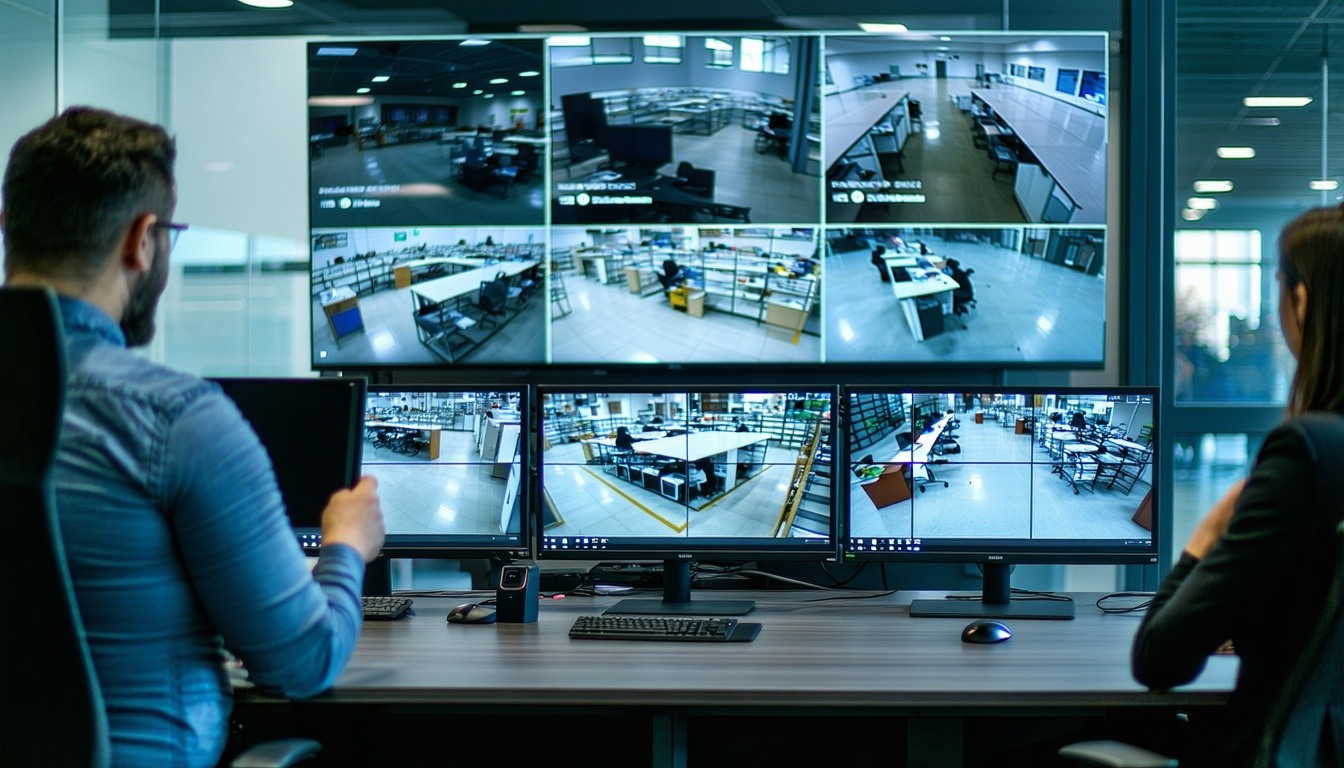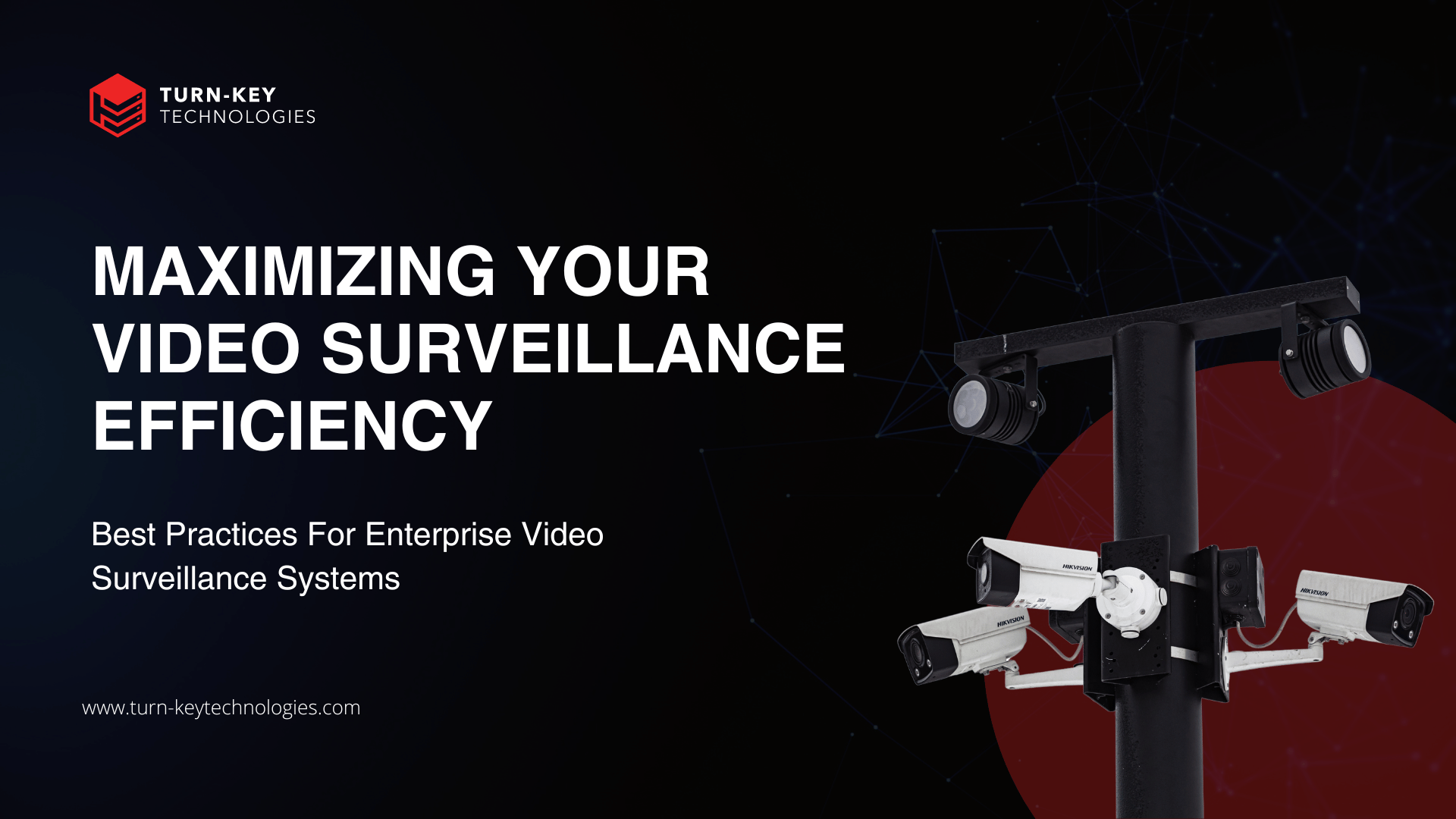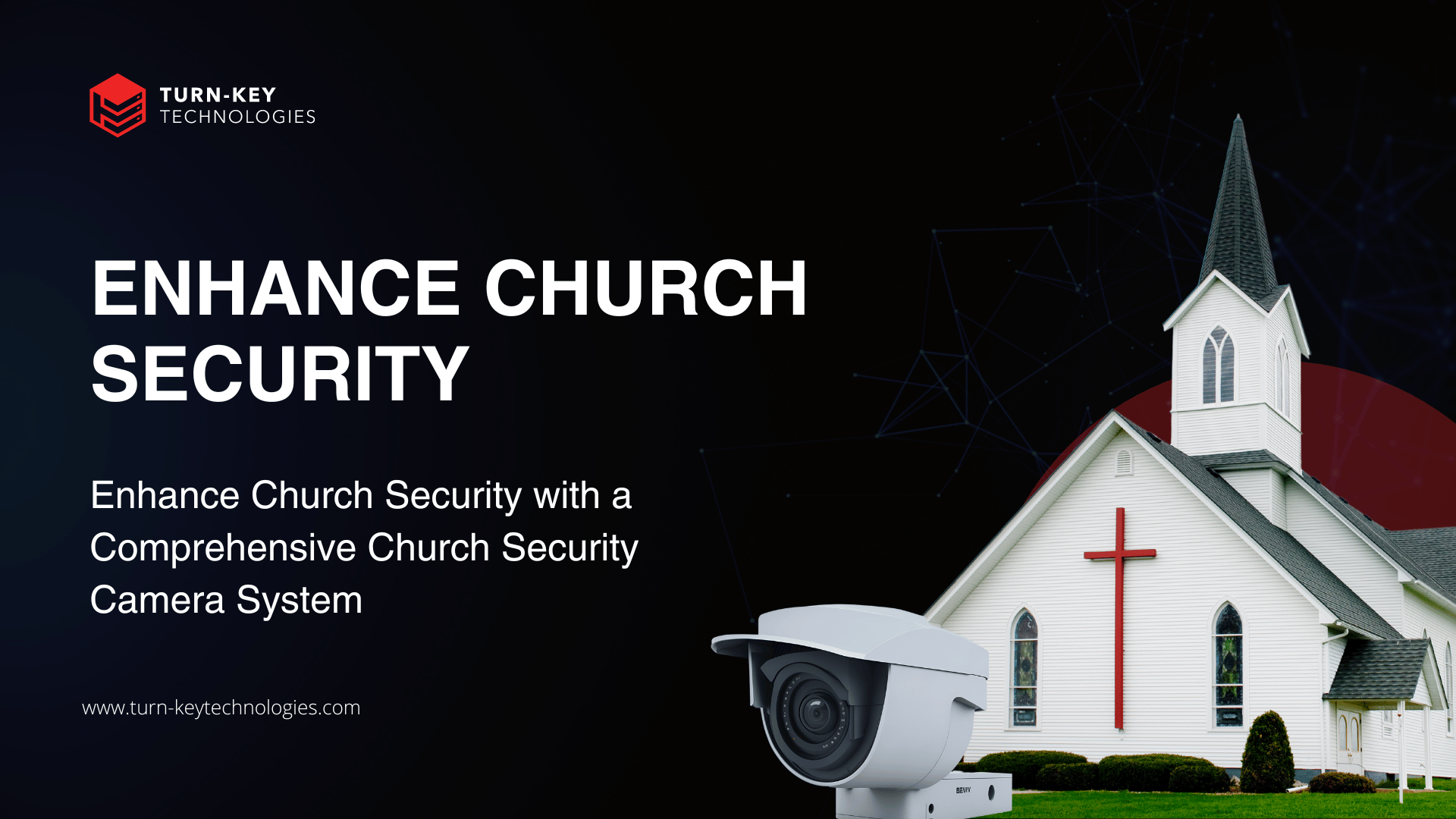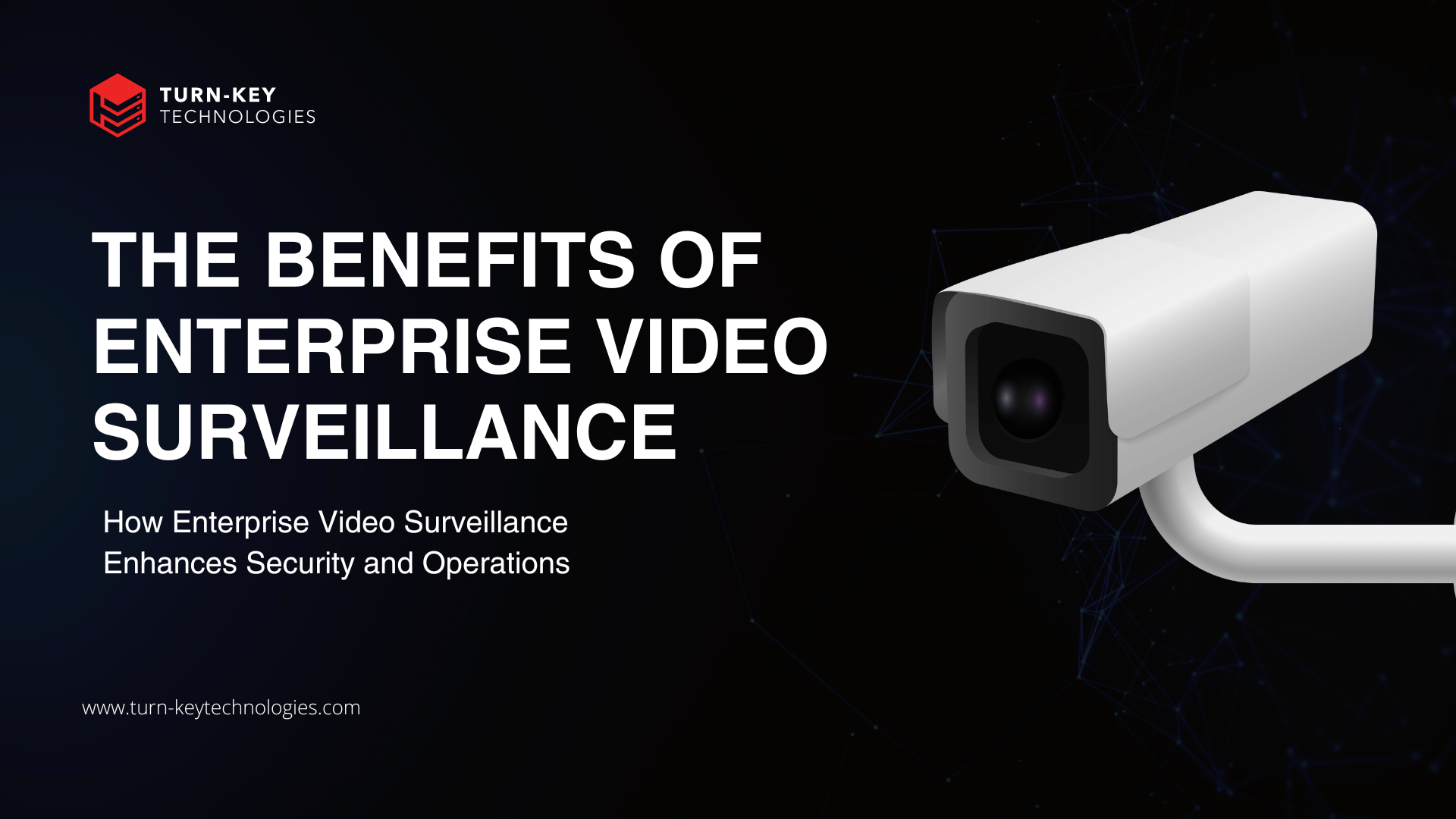1 min read
Video Surveillance Best Practices: Implementing a Security Camera System for Business
Did you know that a recent study found integrating advanced video analytics into surveillance systems can enhance incident detection accuracy by up...
12 min read
Turn-key Technologies Staff : Mar 17, 2025 10:45:00 AM

How can technology leaders within the surveillance industry navigate the complexities of implementing a video surveillance system that meets their enterprise's evolving security needs? As the global video surveillance market is projected to expand from USD 53.7 billion in 2023 to USD 83.3 billion by 2028, businesses are confronted with the challenge of selecting systems that not only meet current security needs but are also scalable and adaptable to future technological advancements and operational demands. This swift market growth, fueled by innovations in camera technologies and the integration of artificial intelligence and IoT, underscores the necessity for a strategic approach to selecting and implementing surveillance systems. This post is designed to guide you through the careful process of determining what your enterprise specifically requires from a surveillance system. We'll explore how to navigate the myriad of options available, ensuring that your choice meets both your present needs and those of the future.
Before choosing a video surveillance system for your enterprise, it is crucial to thoroughly evaluate your surveillance requirements and needs. This process begins with a comprehensive assessment of your business premises to identify the specific areas that require monitoring. Consider the size of your facility, as larger spaces may necessitate a more extensive network of cameras, while smaller areas might require fewer but strategically placed devices. The layout of the building is another critical factor, as it influences the placement and type of cameras needed to ensure optimal coverage. Pay attention to high-risk zones such as entry and exit points, storage areas, and any secluded spots that could be vulnerable to unauthorized access or activities.
Expanding on the importance of understanding your surveillance needs before choosing a video surveillance system for your enterprise involves several critical steps and considerations. Beyond the initial assessment of your physical premises, it is essential to delve into the various functionalities and technologies available in modern surveillance systems. This includes evaluating features such as high-resolution imaging, night vision capabilities, and motion detection, which can significantly enhance the effectiveness of your security measures. Additionally, consider the integration of advanced technologies like artificial intelligence and IoT, which can provide real-time analytics and remote monitoring capabilities, offering a more proactive approach to security management.
Legal considerations are also paramount when implementing a surveillance system. Understanding local and federal regulations regarding camera placement, data privacy, and footage retention is essential to ensure compliance and avoid potential legal issues. Transparent communication with employees and visitors about the presence and purpose of surveillance cameras is crucial for maintaining trust and upholding privacy rights.
Here’s a detailed breakdown:
Evaluating the design and layout of a facility is a fundamental step in identifying potential vulnerabilities that could be exploited by intruders. This process involves a meticulous and comprehensive examination of all entry and exit points, windows, and any other access points that could serve as potential entryways for unauthorized individuals. It is essential to map out these areas with precision, considering not only the physical structure but also the flow of people and goods within the facility.
Special attention should be given to high-risk areas such as cash handling zones, where financial transactions occur and large sums of money are stored or processed. These zones are particularly attractive to intruders and require enhanced security measures. Similarly, storage rooms containing valuable inventory must be scrutinized, as they often house items that are both high in value and easy to transport.
Secluded areas, which might be easily overlooked during routine security checks, also demand careful consideration. These spots can provide cover for illicit activities due to their isolation from regular foot traffic and surveillance.The size of the premises plays a significant role in determining the scale and complexity of the surveillance system required. A larger facility may necessitate an extensive network of cameras equipped with high-resolution capabilities to ensure comprehensive coverage across vast areas.
This might include the deployment of advanced technologies such as pan-tilt-zoom (PTZ) cameras that can cover wide angles and zoom in on specific incidents. Conversely, a smaller site might require fewer cameras, but these should be strategically placed to focus on critical areas, ensuring that no corner is left unmonitored. This strategic placement is crucial for maintaining effective surveillance, as it allows for the optimization of resources while ensuring maximum security coverage.
This tailored approach ensures that each unique layout is adequately protected, balancing the need for security with the practicalities of the site's size and specific risks.
By customizing the surveillance strategy to fit the particular characteristics of the facility, businesses can enhance their security posture, effectively deterring potential intruders and safeguarding their assets.
Understanding whether your primary goal is to prevent potential incidents by making cameras visibly known or to discreetly detect and record activities is crucial in determining the type of surveillance system you install. This decision between deterrence and detection can significantly influence your security strategy and the overall effectiveness of your surveillance efforts.
If your primary objective is deterrence, you might opt for a system that prominently displays cameras in strategic locations, serving as a visible reminder to potential wrongdoers that they are being watched. This approach can be particularly effective in environments where the mere presence of cameras can discourage theft, vandalism, or other unwanted behaviors. For instance, in retail settings, visible cameras can deter shoplifting, while in corporate offices, they can discourage unauthorized access to sensitive areas.
On the other hand, if your focus is on detection, you may choose a more discreet setup that allows for covert monitoring. This can be beneficial in situations where you need to gather evidence without alerting individuals to the presence of surveillance. Covert systems are often used in investigations or in areas where privacy concerns necessitate a less obtrusive approach. For example, in industries dealing with sensitive information or high-value assets, discreet cameras can capture unauthorized activities without tipping off the perpetrators.
In industries where safety protocols and compliance are critical, surveillance systems play a pivotal role in monitoring employee adherence to these rules and providing evidence in case of incidents. This is especially important in sectors such as healthcare, manufacturing, and food services, where regulatory compliance is not only a legal requirement but also essential for maintaining safety and quality standards.
Surveillance footage can serve as a valuable tool for training, auditing, and ensuring that employees follow established procedures.Furthermore, when considering the implementation of a surveillance system, it's important to think about how it will integrate with other security measures you have in place. This includes how the system will complement alarm systems, access control, and perimeter defenses, ensuring a comprehensive approach to security and protection. Integration allows for a seamless flow of information between different security components, enhancing the overall effectiveness of your security strategy.
For instance, an integrated system can automatically trigger alarms or lock doors in response to detected threats, providing a coordinated response to potential security breaches. This holistic approach not only strengthens your security posture but also optimizes resource allocation, ensuring that all elements of your security infrastructure work together harmoniously to protect your assets and personnel.
When choosing between different types of cameras such as dome, bullet, or PTZ (pan-tilt-zoom), it's essential to consider their suitability for specific areas and purposes. Dome cameras are often used indoors due to their discreet design, while bullet cameras are ideal for outdoor use with their longer range visibility. PTZ cameras, offering the ability to pan, tilt, and zoom, are perfect for areas requiring detailed observation, integrating seamlessly into a network video system for enhanced surveillance. Additionally, evaluating features like night vision and motion detection is crucial for ensuring round-the-clock security. The camera's ability to withstand environmental factors like rain and dust also plays a significant role in its effectiveness and durability, highlighting the importance of choosing the right video surveillance system for specific business needs.
Resolution and storage are other critical factors to consider. High-resolution cameras provide clearer images, crucial for identifying faces or license plates. The amount of storage needed depends on the amount of footage you aim to retain and the resolution at which you plan to record. This consideration is vital for maintaining an effective surveillance system over time, ensuring the right type of system is in place to meet evolving business needs.
Modern surveillance systems offer remote access and alerts, enhancing security management's convenience and efficiency. Through mobile apps and desktop software, users can receive alerts and access live feeds from anywhere, ensuring they are always informed about their property's security status. This capability allows for immediate response to any incidents, further bolstering the effectiveness of a surveillance system and the quality of video footage captured.
Compliance with local and federal laws regarding surveillance is crucial, particularly with respect to privacy concerns. This encompasses understanding regulations on camera placement, the utilization of surveillance footage, and the duration for which it can be retained. Furthermore, it is vital to ensure transparent communication with both employees and visitors about the presence and objectives of surveillance cameras. Such openness is key to maintaining trust and upholding privacy rights.
When choosing a surveillance system, it's crucial to consider scalability and compatibility. Opt for a system that offers easy expansion or upgrading capabilities to accommodate the growth of your business or evolving surveillance requirements. Additionally, ensure the system you select is compatible with other security technologies and can be seamlessly integrated with future innovations in the surveillance field.
To ensure the safety and security of your premises, it is essential to engage with security professionals who can conduct a thorough audit. These experts will provide valuable insights into any vulnerabilities present and recommend the right video surveillance system tailored specifically to your business needs. Additionally, when selecting a vendor for your security system, it's crucial to choose one with a strong track record and exceptional after-sales support. Look into their range of products, how advanced their technology is, and what their customers have to say about their service. This comprehensive approach will help you secure your premises effectively.
Understanding your surveillance needs in depth ensures that you invest in a system that not only protects your assets but also adapts to your evolving business requirements. A well-thought-out surveillance system is a critical component of your enterprise’s overall security strategy, offering peace of mind and a safer environment for your employees and customers.
Once you have a clear understanding of your surveillance needs, it's time to research different system options. There are various types of video surveillance systems available in the market, each with its own set of features and capabilities.
One of the first decisions you'll need to make is whether to opt for wired or wireless security cameras. Wireless cameras offer greater flexibility in terms of placement and can be easily moved if needed. However, they may sometimes compromise on image quality or functionality. If you require multiple cameras and enhanced security capabilities, a wired system might be the way to go, especially for new facilities where the necessary wiring can be incorporated into the initial architectural designs.
When choosing between IP (Internet Protocol) and analog cameras, consider their functionality and your system requirements. IP cameras transmit images over the internet, offer versatile installation options, and provide advanced analytics and recording capabilities. Although analog cameras are generally less expensive, they have limited functionality compared to IP cameras, making the latter a better choice for most commercial video surveillance systems.
If you have an existing analog camera infrastructure and want to transition to a network-based solution, the Avigilon 4-Port H.264 Analog Video Encoder is an excellent choice. This device allows you to integrate up to four analog cameras into your IP network, supporting high-resolution video capture (720 x 480 NTSC or 720 x 576 PAL) at 30 images per second. The encoder utilizes H.264 and Motion JPEG compression to optimize bandwidth and storage, while motion-adaptive 3D deinterlacing ensures sharp, accurate video footage.
The Avigilon encoder is ONVIF compliant, enabling seamless integration with Avigilon Control Center Network Video Management Software (NVMS) and the Avigilon Blue cloud platform for unified security management. It offers flexible installation options with support for Power over Ethernet (PoE), 24 VAC, or 12 VDC power input, and features audio input/output channels, an RS-485 interface for PTZ camera control, and the ability to define privacy zones, ensuring your surveillance system meets your specific needs and compliance requirements.
When it comes to recording, you'll need to decide between motion-triggered and continuous video recording. Motion-triggered systems only record footage when movement is detected within the frame, which can help save storage space. On the other hand, continuous recording captures everything 24/7, providing a more comprehensive record of activity. The best choice for your business will depend on factors such as available storage space, compliance requirements, and specific security needs.
Lighting plays a crucial role in security, and cameras equipped with HD and full-color night vision capabilities can be a game-changer for after-hours and outdoor monitoring. The best commercial video surveillance systems produce crisp, clear images even in low-light conditions, ensuring that you never miss a crucial detail.
Depending on camera placement, you may want to consider cameras with pan, tilt, and zoom (PTZ) capabilities. These cameras offer greater flexibility by providing various views and the ability to zoom in on specific areas of interest. While PTZ cameras are generally more expensive than fixed dome or bullet cameras, they can be a worthwhile investment for businesses that require versatile surveillance coverage. However, if you opt for 360-degree cameras, the need for PTZ functionality may be negated.
When choosing a video surveillance system for your enterprise, it's essential to meticulously evaluate the features and capabilities of each option to ensure that it aligns with your specific security needs.
High-resolution video quality is indispensable, as it provides clear and detailed footage that can be crucial in identifying and addressing potential threats. This clarity is particularly important in scenarios where identifying individuals or capturing fine details, such as license plates or facial features, is necessary for security investigations or legal evidence.
Motion detection is another key feature to look for, as it can significantly reduce storage space requirements by only recording when movement is detected, thereby optimizing data management. Additionally, it provides timely alerts for suspicious activity, allowing security personnel to respond swiftly to potential threats. This feature can be particularly valuable in large facilities where constant monitoring of every area may not be feasible due to resource constraints.In addition to remote viewing capabilities and mobile access, which allow security teams to monitor premises from anywhere at any time, consider advanced features such as two-way audio communication and intelligent video content analysis (IVA).
Two-way audio enables real-time interaction with individuals on-site, allowing security personnel to issue warnings or instructions directly, thereby enabling immediate responses to potential threats and enhancing overall security measures. IVA, on the other hand, can provide automated alerts for specific events, such as unauthorized entry or loitering, increasing the system's efficiency in detecting and responding to security breaches. This technology leverages artificial intelligence to analyze video content in real-time, identifying patterns or anomalies that may indicate security risks.Integration with access control systems is another important consideration, as it can streamline operations by allowing for seamless management of entry points and permissions.
This integration can significantly enhance overall security measures within the facility, ensuring that only authorized personnel have access to sensitive areas. By linking video surveillance with access control, businesses can create a comprehensive security ecosystem that not only monitors but also controls access, thereby reducing the risk of unauthorized entry.
When evaluating the user interface of the video management software, prioritize systems that are not only visually appealing but also intuitive and user-friendly. A well-designed interface can streamline the monitoring process, making it easier for users to navigate through different features and functionalities. This ease of use can be particularly important in high-stress situations where quick action is necessary, as it allows security personnel to efficiently access and manage video feeds, review footage, and respond to alerts without unnecessary delays.
Finally, consider the system's reliability and durability in challenging environmental conditions. Look for surveillance systems that are built to withstand harsh weather elements such as rain, snow, and extreme temperatures. Choose cameras and equipment with a proven track record of performance in various settings to guarantee consistent and reliable operation.
Scalability and integration are crucial factors to consider when choosing an enterprise video surveillance system. As your business grows, you may need to expand your surveillance system to cover additional areas or add more cameras. Therefore, it's important to choose a system that is easily scalable.
Scalability: The Keystone for Future Growth
Scalability ensures that a video surveillance system can expand its coverage and capabilities as the enterprise grows. This might involve adding more cameras to cover new premises or enhancing the system's storage capacity to accommodate increased video data. The key is to opt for a system that can scale up without significant disruptions or the need for a complete system overhaul. For instance, a modular system that allows for the easy addition of cameras or integration of advanced analytics can significantly reduce future costs and complexities.
Integration: Enhancing Efficiency and Security
Integration capability is equally vital, enabling the video surveillance system to work in harmony with other security systems such as access control and alarm systems. An integrated security ecosystem allows for a more comprehensive security posture, enabling different systems to share information and trigger responses based on combined data. For example, an access control breach could automatically direct the video surveillance system to focus on the area of intrusion, capturing detailed footage of the event and triggering alarms or notifications to security personnel.
The benefits of an integrated system extend beyond enhanced security. They also include operational efficiencies, such as simplified management through a unified interface and the potential for automated responses to security incidents. This holistic approach to security not only streamlines operations but also can provide deeper insights into potential vulnerabilities and security trends within the enterprise.
Future-Proofing Your Security Investment
By prioritizing scalability and integration when selecting a video surveillance system, businesses can ensure their investment remains robust and responsive over time. This forward-looking strategy not only addresses current security needs but also anticipates future requirements, thereby safeguarding the enterprise against evolving threats and changing operational demands.
In essence, the choice of a scalable and integrable video surveillance system is a strategic investment in the enterprise's future security and operational efficiency. It is a commitment to adopting a security solution that grows with the enterprise, ensuring that security measures remain effective and relevant, no matter how the business domain evolves.
Selecting the right vendor is a critical step in choosing an enterprise video surveillance system. Look for vendors with a solid reputation and years of experience in the industry. Consider their track record of delivering high-quality products and providing reliable customer support. When assessing potential vendors, various essential factors come into play.
Reputation and Experience
A vendor's reputation in the market serves as a testament to their reliability, quality of products, and customer service excellence. Vendors with years of experience typically have a deep understanding of industry challenges and evolution, enabling them to offer solutions that are both tried and tested yet innovative. Their track record in delivering high-quality products and navigating the rapidly changing technological landscape is invaluable.
Product Quality and Support
The durability and performance of the surveillance system are directly linked to the quality of the products offered by the vendor. High-quality cameras, software, and ancillary equipment ensure reliable operation and longevity of your security system. Equally important is the vendor's commitment to customer support—comprehensive product warranties, responsive customer service, and accessible technical support are crucial for resolving any issues that may arise during the system's lifecycle.
Customer Reviews and Testimonials
Customer reviews and testimonials offer insights into the real-world performance of the vendor's products and the satisfaction levels of their clients. These can highlight the vendor's strengths and potential areas of concern, aiding in making a well-informed decision. It's also beneficial to engage with your network or industry forums for firsthand recommendations and feedback about their experiences with potential vendors.
Comprehensive Service Agreements
The scope and reliability of service agreements indicate the vendor's commitment to their clients post-purchase, an important aspect when selecting the right video surveillance system. These agreements should cover maintenance, updates, and technical support, ensuring your system remains effective and up-to-date. The clarity and comprehensiveness of these agreements can significantly impact the long-term operational costs and effectiveness of your surveillance system.
If you’re looking for a vendor at the forefront of enterprise video surveillance systems, look no further than Turn-key Technologies, Inc. (TTI). With help from our experts, you can have a reliable security camera system with a network capable of supporting it up and running in no time. What’s more, we offer an unprecedented level of support through our unique PAVTAC offering, delivering ongoing training, check-ins, troubleshooting assistance, and peace of mind beyond installation. If you buy an Avigilon security camera, we’ll even ensure you know all about any new camera features as they arise and will perform an annual on-site physical system inspection to ensure your cameras, mounts, and cables are all still in good shape.
Ready to evaluate security surveillance systems for your business? Contact us today!

1 min read
Did you know that a recent study found integrating advanced video analytics into surveillance systems can enhance incident detection accuracy by up...

Churches are no longer just places of worship; they are increasingly vulnerable to threats like theft and violence. In this blog post, we emphasize...

1 min read
Did you know that a recent industry report found that over 40% of business institutions have identified significant vulnerabilities within their...